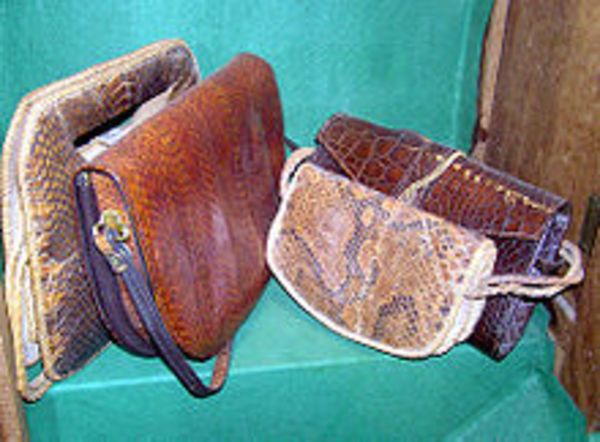
The ladies' bag is a type of handbag, a fashion attribute usually worn by women, which contains keys, wallets, hair brush, make-up and some other small items.
The size of the ladies' bags varies from 10 to 10 centimeters to about 50 inches to 50 centimeters. They can have one or two handles that may be short or long or have no handles. Their price ranges from $ 10 to thousands of dollars for bags made by prominent designers.
The materials of which are made are mainly textile and artificial or natural leather.
The bags, purses and purses have been used since people needed something to carry their important items. On ancient Egyptian hieroglyphs are depicted men wearing purses on the waist. The Bible mentions that Judas Iscariot has carried a purse. Peasants in the first societies used small bags for seed transport.
The development of art and industry throughout the Victorian Era creates a great selection of fabrics and styles that women combine with their overall outfit. Although pockets returned in the 1940s, women continued to wear their bags and take the time to decorate them. This was done in order to impress their future husbands, often marking their date and initials on the bag.
With the emergence of rail transport, a handbag is being revolutionized. In 1843 there were almost 2000 miles of railways in the UK. With the increasing number of women traveling by train, there is a need for means of hand luggage. The artisans have directed their efforts from horse to rail, and the term "ladies handbag" is now emerging which describes newly created handbags for luggage. Many of the leading ladies handmade manufacturers today start just like manufacturers of bags and bags. Hermes was discovered in 1837 by Thierry Hermes, a producer of saddle and harness, while Louis Vuitton made bags for the wealthy Parisians.
In the 30s of the 20th century, fashionable bells, sackcloths and shoulder bags came into fashion. They have drawn inspiration from the style of Art Deco, which has emphasized abstraction and new production materials such as plastic and zippers.
The Second World War led to the rise of the shoulder ladies handbags. In the 30s of the 20th century fashion got a more military look. The bags become larger, square and practical. The lack of zippers, leather and mirrors forces designers to use wood and plastic as a base in combination with new synthetic materials such as artificial silk. In the UK, women wore their ladies' bags, both to complement their toiletries and to carry gas masks in them. In France and the United States with women's entry into production, the best choice was the shoulder bag. After the war, this type of bag was mainly used for travel.
The flowering of the post-war economy launches handbags to economic status. Decorating the towel with a ladies' bag becomes a normal thing, regardless of the social status of the holder. The small bags become a symbol of femininity - in complete contrast to the fully functional shoulder bags of the previous century.
